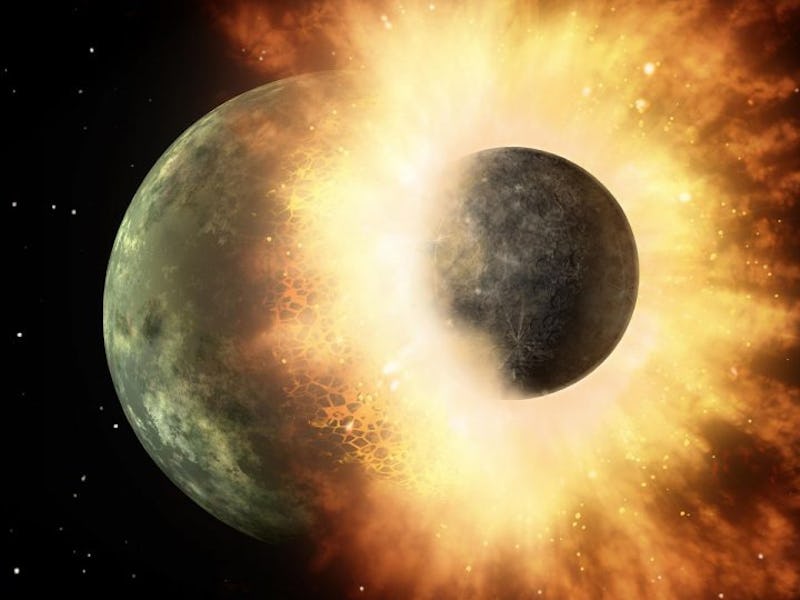A Head-on Collision Lies Behind the Formation of the Moon?
Researchers report that the standard side-angle theory doesn’t fit their findings.

The moon was cut from the early Earth with a “planetary embryo” called Theia roughly 100 million years after the Earth formed, geochemists and colleagues from UCLA report.
The theory that the runaway proto-world, Theia, separated the material that would become the moon from the young Earth approximately 4.5 billion years ago is not a new concept, but the UCLA staffers stated Thursday that the impact was a head-on smash. Previous theories held the collision to be angled at least 45 degrees.
According to the researchers, seven rocks brought back from the moon during the Apollo missions were compared with volcanic Earth mantle rocks — and by measuring the count of oxygen isotopes found in the studied material, the UCLA team found matches between the specimens.
“We don’t see any difference between the Earth’s and the Moon’s oxygen isotopes; they’re indistinguishable,” said lead author of the study and UCLA professor of geochemistry and cosmochemistry Edward Young told the school’s website.
The theory that the Earth and moon share a composition is not new data (although previous studies have found differing results) but the point Young was making is that, according to the UCLA researchers, had Theia struck Earth from a side angle, the moon would consist mainly of Theia’s matter, which would have a different composition than what is found in Earth rocks. The similar isotope makeup between Earth and the moon, the UCLA team states, means the world-shattering impact must have been direct — and that Theia was absorbed by the catastrophe — says Young:
“Theia was thoroughly mixed into both the Earth and the Moon, and evenly dispersed between them…this explains why we don’t see a different signature of Theia in the Moon versus the Earth.”
Theia, the researchers speculate, could have possibly become a planet within the Solar System had it not smashed into the Earth.